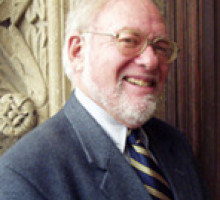
Reviews
Scholars active in the study of higher education may find this book very informative not only for the plentiful information and data provided, but also for the authors’ in-depth analysis of the evolution of the place of faculty in academia and beyond.
A tour de force. This exhaustive, extremely well-written compendium on how the 'condition' of the faculty has transformed in recent decades is truly a magnum opus.
The Faculty Factor is the book we’ve needed for two decades. It describes the composition of the professoriate with overwhelming data on every dimension that planners and faculty members could conceivably want. It updates the authors’ previous magisterial work and goes beyond it with new information on the progress in hiring of women and members of minority groups and the more ambiguous patterns in promotion and tenure. It demarcates differences by field, type of institution, and even previous career patterns. Everyone who cares about the quality of American higher education must read this book and keep a copy ready-at-hand.
Book Details
Preface
Acknowledgments
Part I. Setting the Stage
Chapter 1. Establishing the Framework: The Emergence of a New Paradigm
Chapter 2. The American Faculty in Historical Perspective
Chapter 3. The Faculty in
Preface
Acknowledgments
Part I. Setting the Stage
Chapter 1. Establishing the Framework: The Emergence of a New Paradigm
Chapter 2. The American Faculty in Historical Perspective
Chapter 3. The Faculty in Profile
Part II. Changing Trajectories of Academic Careers
Chapter 4. Changing Pathways to Career Entry
Chapter 5. Career Progression and Mobility
Chapter 6. Career Exit: Faculty Retirement Viewed Anew
Part III. The Changing Complexion of Faculty Work and Professional Identity
Chapter 7. Faculty Work Under Pressure
Chapter 8. Academic Culture and Values in Transition
Chapter 9. Academic Compensation Trends In A New Era
Part IV. American Academics in Global Perspectives
Chapter 10. The American Faculty in a Newly Globalized Higher Education Environment
Chapter 11. American Faculty in an International Perspective
Part V. Prospects for the Academic Profession
Chapter 12. American Academic Life Restructured
Chapter 13. Where From Here? Interventions to Reinvigorate the Faculty Factor
Afterword
Appendixes
A. Data Sources: An Overview and Status Report 00
B. PhD Production and Distribution Trends
C. Race and Ethnicity Classifications: An Update
D. Changing Academic Professions, 2007-08: Methodology
E. Appendix Tables
Index






